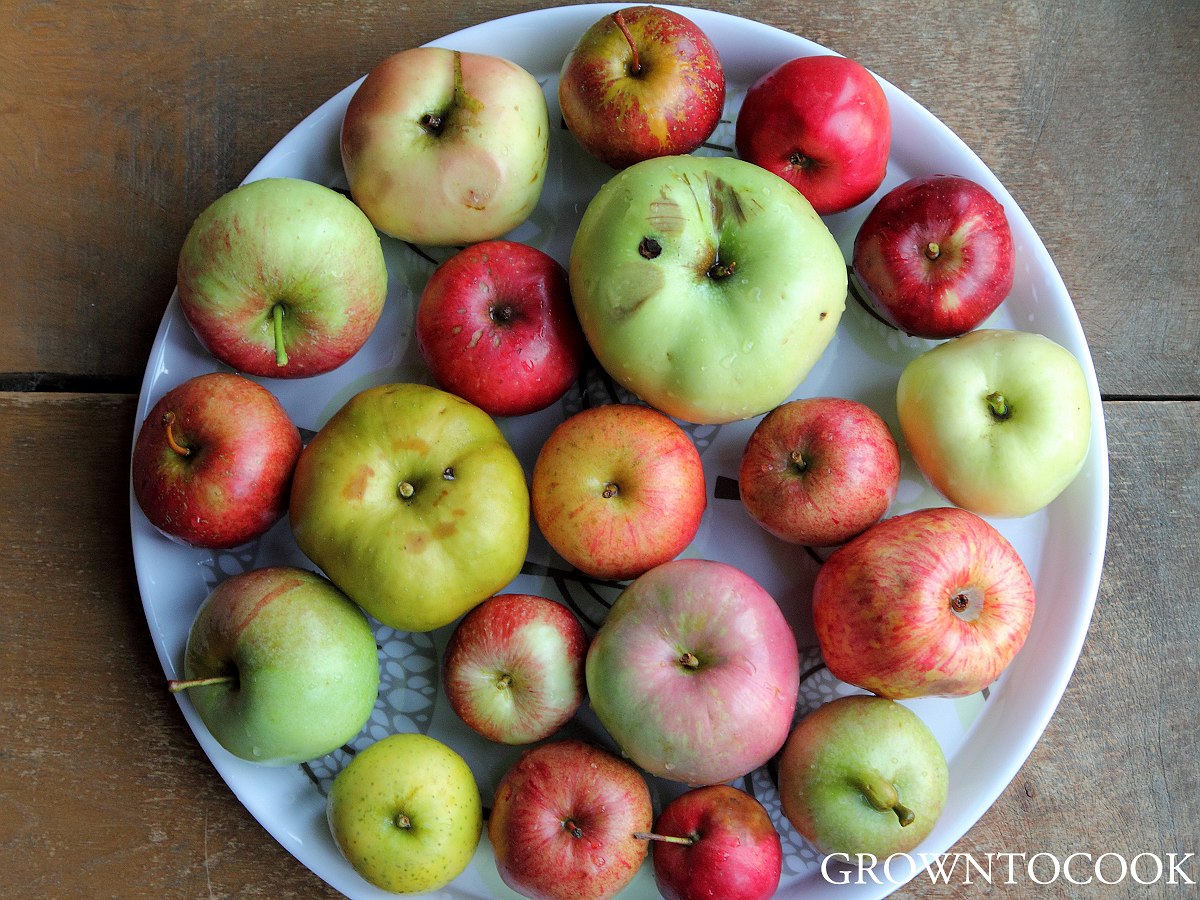
Designing our new garden is all about fulfilling a long-time dream of being able to grow all the veg and fruit we need/want. When it comes to vegetables, self-sufficiency requires adequate space and a fair amount of planning, but is within the reach of a dedicated gardener. But when it comes to fruit, it is far more difficult to achieve. Also: you’d better like apples since they are the only fruit available locally for about four months of the year. Which is why choosing the apple trees for our garden is a serious and rather complicated matter.
In case you are planning a garden (or just dreaming of one), here are the things I take into consideration when choosing apples (most of them will apply, in varying degrees, to other fruits as well):
1) Rootstock
Just about all apple trees you can buy are grafted on a rootstock. The rootstock, in combination with the variety grafted on it and the soil, determines the size of the mature tree. There are many rootstocks for apples (M 9, M27, M106… ) but nurseries usually label the trees as ‘bush/dwarfing’, ‘half-standard’ and ‘standard’. ‘Bush’ trees are the smallest, growing to only about 2 to 3 meters high. Consequently they will yield the least, about 10 to 20 kilo of fruit, and their lifespan is only some 15 to 20 years. On the other side of the spectrum, ‘standards’ can grow as tall as 8 meters and yield more than 100 kilo of apples a year. They take longer to start producing fruit but can keep going for a century.
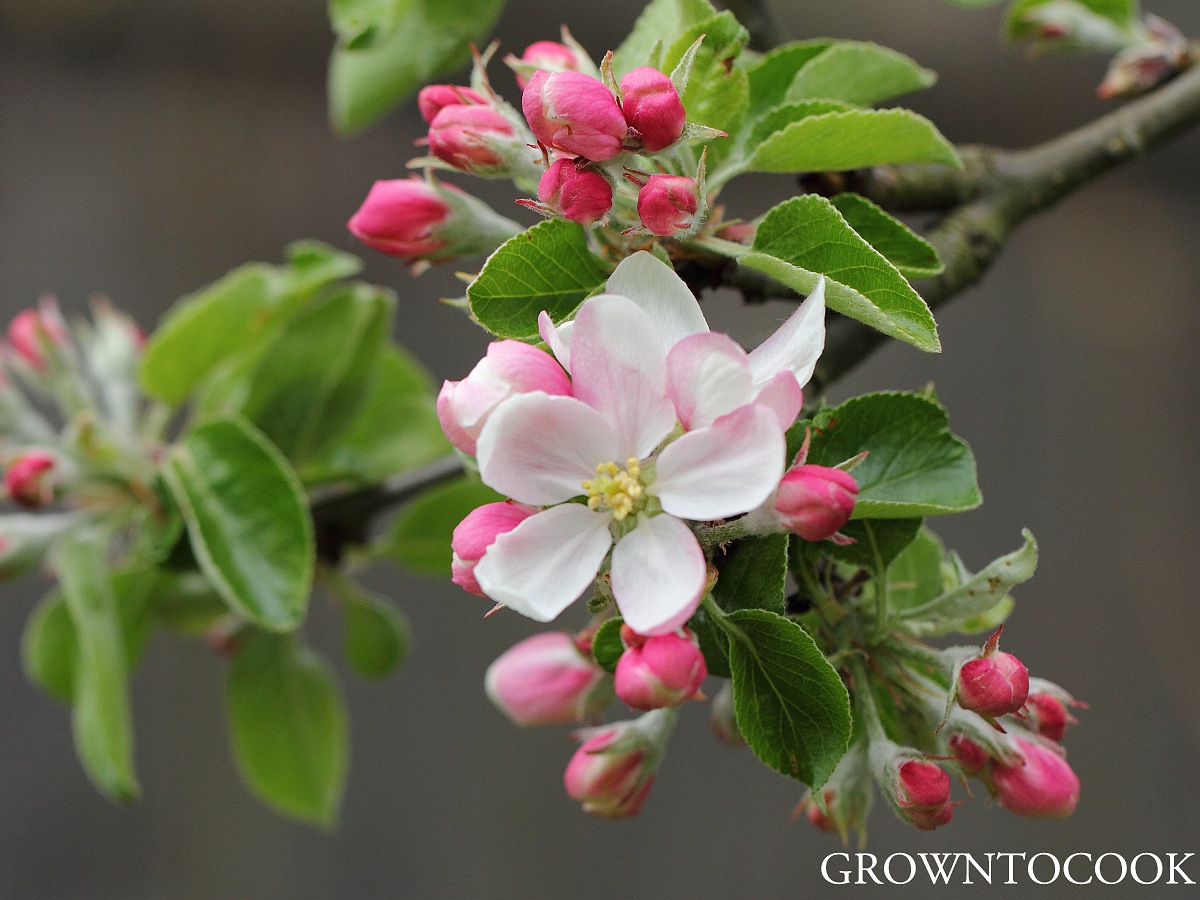
2) Pollination
Most apples need another variety growing nearby for pollination in order to set fruit and the so called ‘triploid’ varieties might require two. Apples are divided into 7 groups according to their flowering time – a variety from one group will pollinate other varieties in the same group as well as those from the adjacent groups. If you only have space for one tree and there are no other trees close by, you can plant a self-fertile variety. We grow two self-fertile varieties: ‘Manks Codlin’ and ‘Groninger Kroon’. But even with these, yields will be improved by cross-pollination.
3) Storage
From summer apples that keep for just about 2 weeks, to winter apple varieties some of which can be stored till next year’s summer, the time for which apples will keep in storage varies greatly. This is an important consideration: planting a standard tree of ‘Transparant Blanche’ which might produce tens of kilos of apples that you’ll either have to eat immediately or process within a week, might not be a good idea. Especially since they’ll ripen in the middle of summer when there are lots of other fruits around as well. (I’m speaking from experience – my parents have a huge ‘Transparant Blanche’ in their garden and I often spend a good portion of my summer vacation making apple butter). Of course: growing long-keeping varieties is only sensible if you have some (cool) place to store them. We have a small cellar which is unfortunately a little too warm and that means our apples do not keep quite as long as they could under better circumstances.
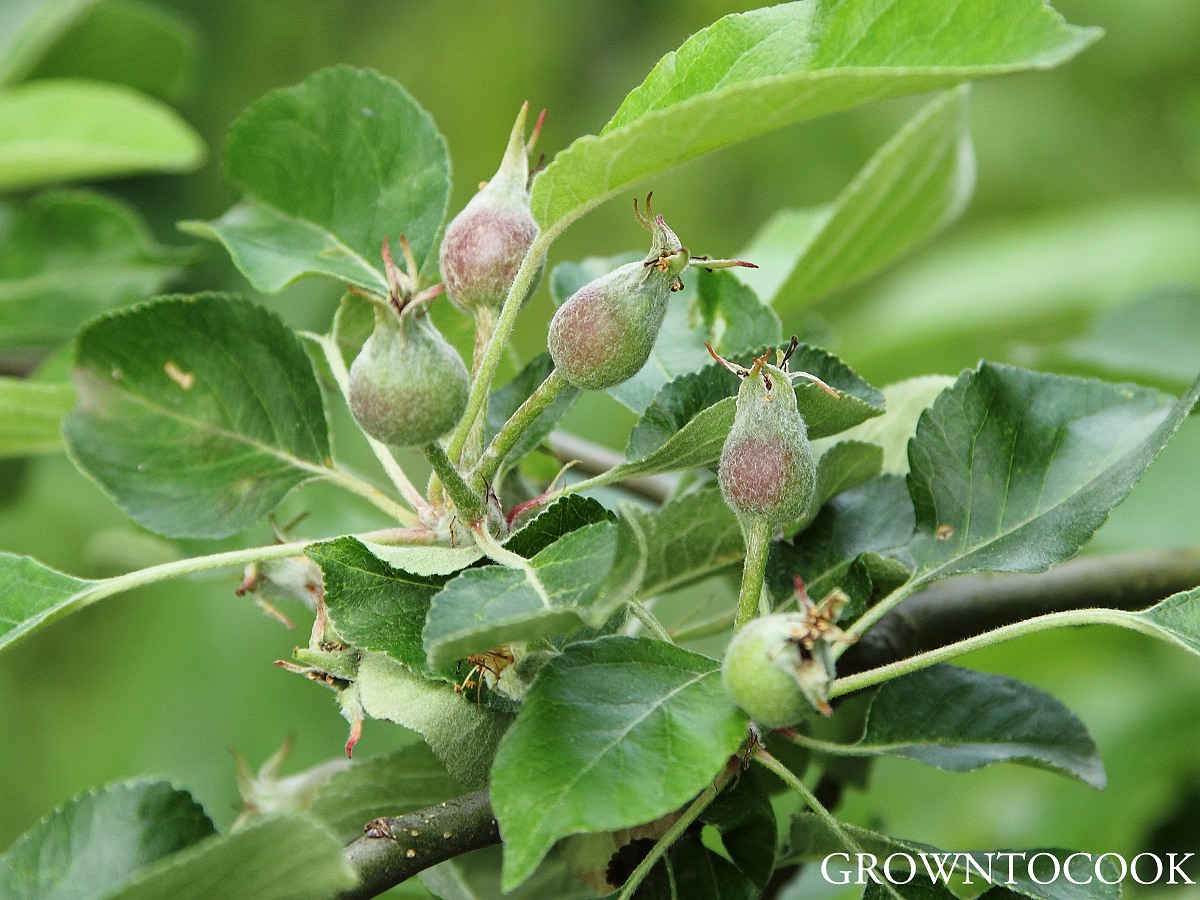
4) Disease resistance
We’re gardening organically and I do not spray at all (not even with sprays allowed for organic growers). Moreover, the higher humidity within a forest garden might lead to higher occurrence of fungal diseases. Which means choosing naturally strong, disease resistant varieties is key. These may be old local apple varieties or modern varieties bread for scab resistance, such as ‘Topaz’ and ‘Santana’.
5) Use and taste
Some apples are primarily dessert apples, others are great for making cider or baking apple pie. ‘Cookers’ are often easier and will grow well even in less ideal conditions. Taste, of course, is very important but also completely personal. The best thing is to go to apple tastings (our favorite family past time in autumn) and take notes on the varieties you like best.
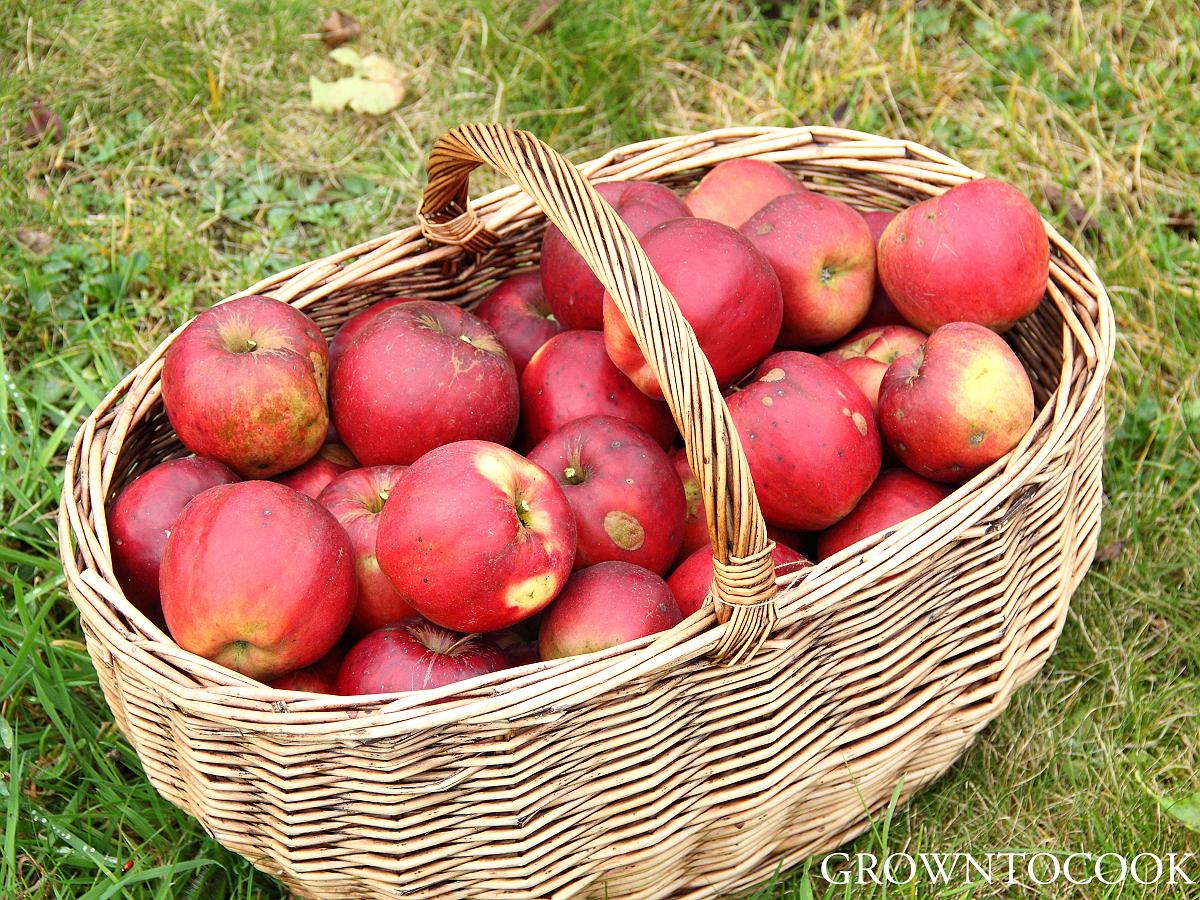
What does this mean in our garden?
Our soil is sandy and low in nutrients which means the trees would probably not grow terribly big, even on a standard rootstock. Since trees grown on these rootstocks are stronger, they might actually be preferable in our situation. But because I want a variety and not a huge amount of apples of one sort, I am not planning on growing any standards in the garden. Most of the varieties will be grafted on dwarfing rootstock, adding maybe one or two ‘half-standards’ of long-keeping varieties. Because we’ll be growing some 6-7 different varieties and our garden neighbours another 7, plus there are more apple trees scattered on the surrounding plots, I don’t have to worry about pollination and I can even plant triploid varieties.
The apples we already have are early and late autumn varieties that see us through/from August till end of November. Therefore I would like to add some winter apples that would prolong the season.
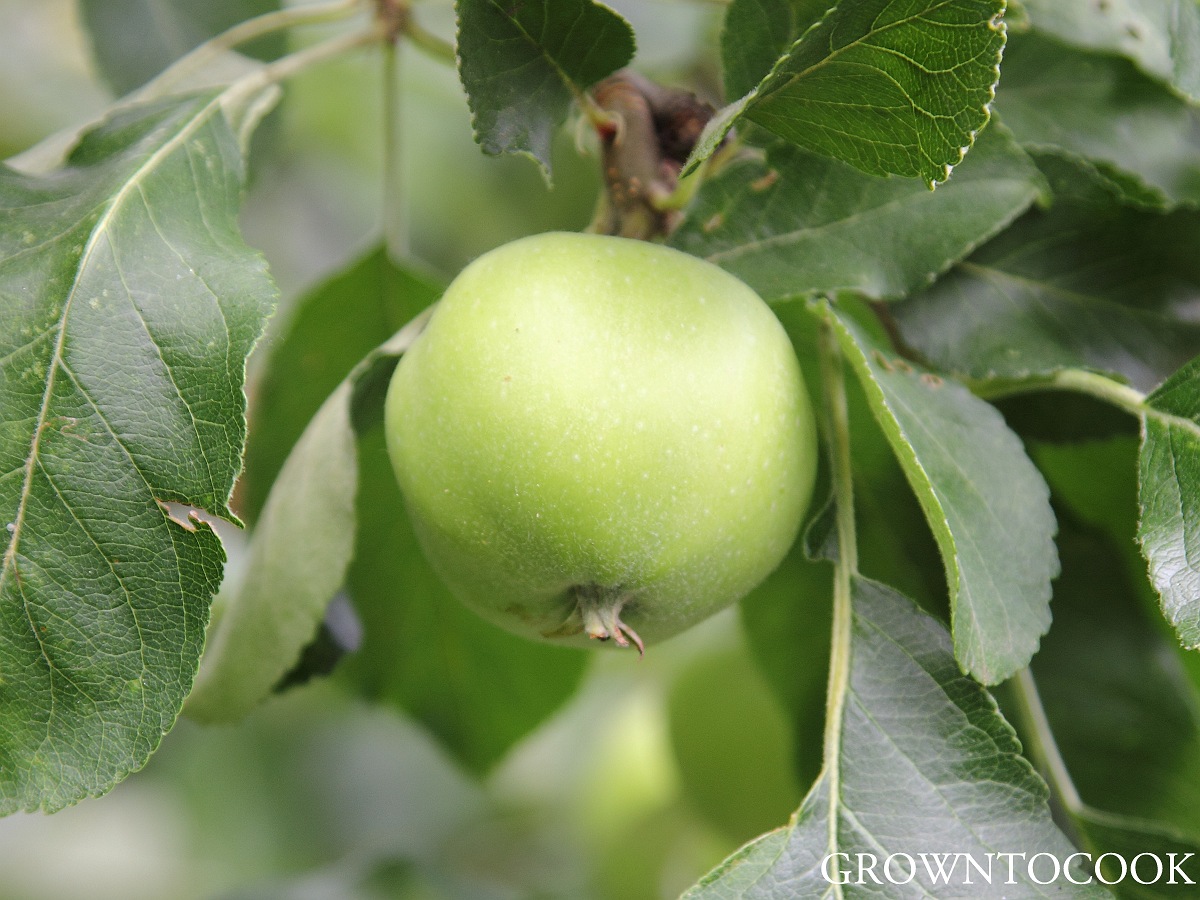
We have 5 trees, all grafted on dwarfing rootstocks, growing in our old garden which we plan to move. Two of them (Groninger Kroon & Glorie van Holland) are already 5y old and might be a bit difficult to move ( I wrote more about these varieties here), but the other three are tiny things that I grafted two years ago.
Groninger Kroon – an old Dutch variety, primarily a cooking apple, self-fertile and a good pollinator, picking in September, can be stored till January
Glorie van Holland – also an old Dutch variety, juicy & sweet-sour dessert apple, good disease resistance, picking mid September, storage till November
Pinova – a modern German variety, sweet dessert apple, good resistance to scab and canker, but somewhat susceptible to mildew, picking in October, can be stored till March
Reinette de Champagne – a very old French variety (or possibly German), juicy & lightly perfumed apple, dessert variety but also good for juicing and drying, somewhat susceptible to scab and canker, picking October, storage till May
Greensleeves – a modern English variety, partially self-fertile, dessert apple, good disease resistance, harvest late October, very short storage
And these are other varieties I am considering:
Ecolette – a modern, scab-resistant variety, the popular ‘Elstar’ being one of its parents, self-fertile, long storage
Winter-Gravesteiner – juicy and aromatic dessert & cooking variety, harvest October, storage till April, (this one has reportedly great flavour, but it seems to do better in colder climate and is very popular in Scandinavia)
Lunterse Pippeling – an old Dutch variety, dessert apple – very flavoursome, harvest October, storage till April
Glockenapfel – an old variety from south Germany or Switzerland, bell-shaped fruits, crisp, dessert apple and good for baking too, partially self-fertile,somewhat susceptible to scab, otherwise healthy, harvest October, storage till April
Finkenwerder Prinz – an old German variety, sweet&sour dessert variety, harvest mid-October, storage till February, not suited for dwarfing rootstocks, good disease resistance
Do you have experience with any of the above or are you growing a variety you would recommend?
2 comments for “Choosing apples for our new garden”